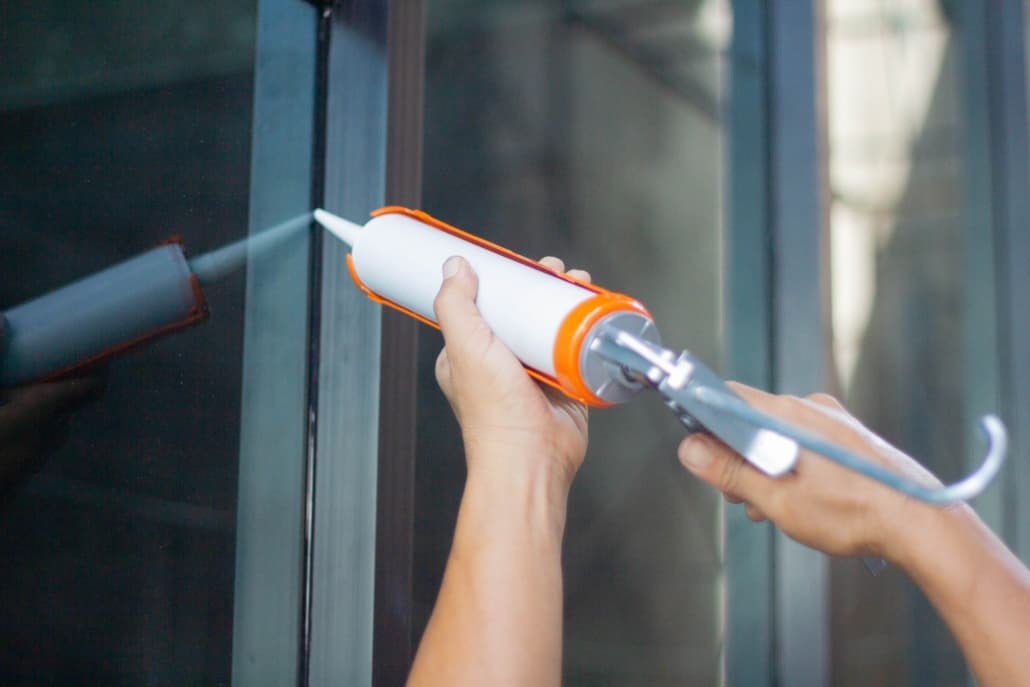
Air gaps in your home can cause a spike in your electricity bill, as your temperature control system will have to work much harder to maintain a comfortable living environment. Luckily, there’s no shortage of ways to prevent this, including silicone or window sealant.
Siliconing windows saves energy by affordably blocking airflow from leaving and entering a building. This process, in turn, means less energy is required to maintain a comfortable temperature, resulting in a lower electricity bill. You can save an average of 7-8% on your energy bills by caulking your windows.
There are different ways window silicone saves energy in various weather conditions a bit more in-depth.
Silicone During Cold Winter Weather
During winter, the main goal is to keep your home as warm as possible without using too much energy. Keeping your home warm will be much more challenging if you have air gaps.
As expected, openings in your home’s structure mean that the cold air from the outside will seep through the gaps, while the warmer air from inside will escape.
Caulking Prevents Moisture-Related Issues
Having air gaps in your home allows moisture from the outside to flow in. Unfortunately, this can damage your home, as too much humidity can promote mold growth.
Additionally, it may cause your walls or ceilings (or both) to get excessively humid, which may result in water damage. One of the common ways to reduce moisture in a room is by using a dehumidifier. However, these devices are electrical, so they use energy.
To ensure you don’t need to resort to using dehumidifiers all over your home, you should consider caulking the gaps around your windows.
How To Efficiently Caulk Windows To Save Energy
To efficiently caulk windows for energy saving, you should apply window silicone to any gaps found in your home’s structure. You can do this repair yourself using a silicone gun.
It’s essential to search high and low for any possible gaps to increase the chances of an efficient window caulk job. If you miss any holes, outside air will still be able to get in, and the indoor air will still be able to escape
Here are some other materials you may need:
- A scraper – you’ll need a scraper if there’s any old caulk leftover.
- A knife – you’ll need a knife to cut off the tip of the caulk container.
- A long sharp object – you’ll need a long sharp object to pierce the seal of the caulk container (a nail, for example).
-
Find the Air Gaps
Locate all the air gaps around your windows before continuing. You may also want to fill in other gaps around your home.
If that’s the case, be sure to examine everywhere, as some cracks can be hard to find. Once you have found all the air gaps, you can begin the window silicone application.
Silicone Using a Caulk Gun
A silicone gun makes it easy to fill in air gaps around your window, so it’s the best thing to use for the job. Before beginning, you’ll need to scrape away any loose paint or old caulk. Then, you must cut the tip of the caulk tube with a blade before piercing the film seal with a nail or other sharp object.
Once the silicone can exit the container freely, you can begin caulking. Be sure to get all the gaps by moving the gun carefully around the window.
To ensure your energy bills drop as low as possible, you should silicone both the outside and inside of your home for the best results.

What Happens if Windows Are Not Caulked?
Mold Growth
Water Damage
Higher Energy Bills
Conclusion
In conclusion, siliconing windows is an excellent way to save energy and reduce your bills by up to 10%. It prevents outside air from getting in while also preventing internal air from getting out.
Finally, while siliconing windows reduces energy consumption, it’s still important to promote ventilation by opening windows from time to time to prevent moisture.